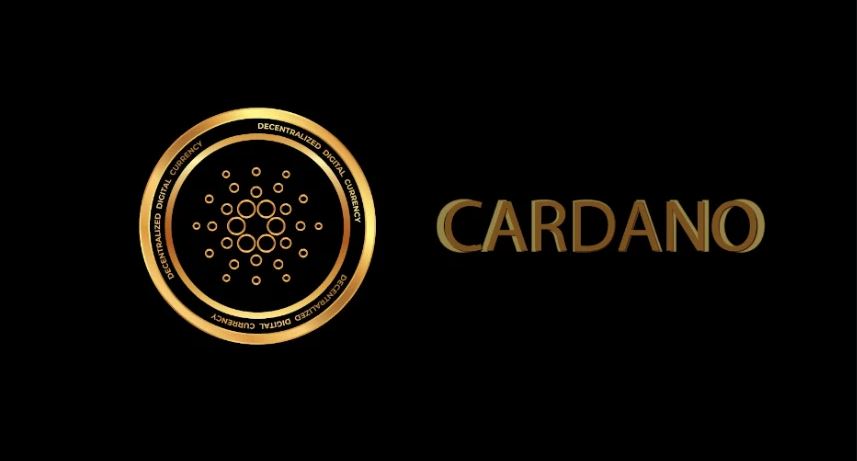In this article we try to introduce you Cardano, the decentralized platform. The Cardano ecosystem contains so much well known name as an alias for its development steps like Goguen and Voltaira. Let’s see what this cryptocurrency all about and how it works!
What Is Cardano (ADA)?
Cardano is a decentralized blockchain platform with the Cardano Foundation behind. It uses the Proof of Stake (PoS) consensus mechanism, known as Ouroboros, which is more energy efficient than traditional Proof of Work systems. This PoS system lets the network users to “stake” their ADA, the native cryptocurrency of the network, to maintain network integrity and participate in governance.
As Cardano is an open-source platform, its code is accessible for anyone to review, develop or use it. It guarantees scalability, security, and sustainability. It widely used as a host for decentralized financial (DeFi) applications or DApps in short.
The History of Cardano
Cardano Foundation was co-founded by Jeremy Wood and Charles Hoskinson and they started the development of the project in 2015. Then in 2017 they announced the white paper and finally its mainnet launched in 2018. The name “Cardano” is inspired by Italian mathematician Gerolamo Cardano, a Renaissance mathematician, while its cryptocurrency, ADA is named after Ada Lovelace, called as the first woman computer programmer after her works.

The Cardano platform has marked several significant milestones since its launch. It introduced the Ouroboros protocol, the first peer-reviewed, verifiably secure blockchain protocol, and continues to evolve through a series of developmental phases called Byron, Shelley, Goguen, Basho, and Voltaire. Each phase added new features to the platform, such as scalability, interoperability, and sustainability.
In the project’s life 2020 was a very important year. That time it changed from the Byron era to the Shelley era and went to fully decentralized and secure.
How Does Cardano Work?
You already know the steps of the development of the Cardano Ecosystem. Now let’s see what they are and how these steps define how the Cardano blockchain network works.
Ouroboros – The Proof of Stake Mechanism
Ouroboros is the engine of Cardano, representing a significant leap in blockchain technology. Unlike the energy-intensive Proof of Work (PoW) system used by Bitcoin, Ouroboros uses Proof of Stake. In this system, the creation of new blocks and the security of the network are maintained by ADA holders who “stake” their cryptocurrency for participate. This method is more energy-efficient and also democratizes the process of managing the blockchain.
Byron – Launch
Byron is the foundation of Cardano, marking its official launch in September 2017. It was named after Lord Byron, Ada Lovelace’s father. This stage was the foundation of the system for a stable and secure network. The focus was on building a user-friendly platform, with the introduction of the Daedalus wallet, that made possible for users to interact with Cardano’s blockchain. This phase was all about testing, making sure that the network was ready for more advanced features and capabilities in the future.
Shelley – Decentralized Network
Shelley was built in in 2020, focusing on transitioning the network to decentralization. This phase is where Cardano changed working from static to a dynamic, decentralized one. From that point the users, or ADA holders could became validators, that means that they stake a big enough amount of their tokens not to lose to make the blockchain secure by validating transactions. Shelley’s introduction of staking pools also allows smaller ADA holders to participate in the network. Shelley made Cardano a fully decentralized and community-driven platform.
Goguen – Smart Contracts
The Goguen era started in September 2021 and made possible to the network to use smart contracts. These are automated contracts that made possible for automated transactions and creating decentralized applications on the blockchain. Cardano uses the Plutus scripting language to create smart contracts. It contains Plutus scripts and Plutus Core. Plutus scripts define the terms and conditions of a smart contract, while Plutus Core is responsible for verifying and enforcing smart contract execution.
This stage of development also made possible for decentralized cryptocurrency exchanges (DEX), NFTs, DApps and even supply chain management to use Cardano.
Basho – Scalability
Basho is all about to solve scalability problems and it was introduced in March 2021. This was needed because as more people and DApps started using Cardano, sometimes transactions delayed and fees increased when the traffic was high. With this development the Cardano ecosystem is able to handling about 1000 transactions per second (TPS). Just in case Bitcoin and Ethereum can handle much more less transactions. For example the Ethereum blockchain can handle 15-20 TPS.
Voltaire – Decentralized Governance
With Voltaire from the year 2023 the network allows ADA crypto holders to influence the future development of the network. This is the final stage of the Cardano roadmap. So users can use ADA to vote. It means their staked ADA defines how much influence they have on Cardano’s future. This way Cardano went democratized, community driven blockchain.
The ADA Cryptocurrency
ADA is the Cardano cryptocurrency for the platform. The coin is named after Ada Lovelace. It is used for quick and secure transactions and can be staked for validating them. Staking ADA also gives the holders right to vote about platform decisions, called governance token.

ADA has a 45 billion supply cap in tokens to promote rarity and value stability. This limited supply also helps fight inflation over time. Finally it also stores value so it has its investment potentional.
Future of Cardano And ADA Token
As Cardano is evolving, a key focus is the integration and development of Cardano 2.0. It’s central feature is the Hydra which aims to raise transaction processing capacity.
Hydra is a layer-2 scalability solution, designed to increase Cardano’s transaction performance exponentially. The primary objective of it to make possible for the network to process up to 1 million TPS. This would be huge, however the expected date to come this true is 2028. At the moment transactions on the Cardano network works with a speed of approximately 1000-2000 TPS.
Its ability to process transactions off the main blockchain (off-chain) while still maintaining the security and integrity of the main chain. That means transaction time would also reduce. This is really good for high volume real time applications.
Integrating Hydra into Cardano’s two-layer structure – the Settlement Layer for ADA transactions and the Computing Layer for smart contracts and DApps – represents a major step forward.
The future of Cardano, with the introduction of Cardano 2.0 and the implementation of Hydra, is focused on creating a more inclusive, efficient, and powerful blockchain ecosystem. These developments reflect Cardano’s ongoing commitment to pushing the boundaries of blockchain technology, ensuring its relevance and utility.
How To Buy Cardano?
If you want to start investing in Cardano, here’s a simple guide how to buy ADA coin. It’s similar to buy other cryptos. Cardano’s actual price at the time of writing is $0.4099 with a total of over 35 billion circulating supply of ADA tokens.
- Choose a Cryptocurrency Exchange: Select a cryptocurrency exchange where ADA is available. Binance, Coinbase, or Kraken could be a good choice because they are easy to use. Before selecting it check the fees and choose that is the most suitable for you.
- Create an Account: You need at least a mobile number, an e-mail, and some documents like ID card to verify your identity. Some of the exchanges may require also a selfie verification by your phone.
- Deposit Funds: Most exchanges allow you to deposit fiat currency (like USD, EUR, or GBP) using bank transfers, credit/debit cards, or even PayPal on some platforms.
- Purchase ADA: Navigate to the ADA trading section on the exchange. You can then buy ADA using the deposited funds. You’ll have options to place different types of orders, such as ‘market’ (buying at current market price) or ‘limit’ (setting a price at which you want to buy).
- Transfer ADA to a Wallet (Optional): For added security, we recommend you to transfer your ADA from the exchange to a personal cryptocurrency wallet (especially if you want to hold your tokens instead of daytrading them). Wallets come in various forms, such as hardware wallets (like Ledger or Trezor) or software wallets (like Daedalus, Cardano’s official wallet, or Yoroi, a light wallet for Cardano). For a detailed guide about the top wallets check our article about it here.
Featured image source: photo by Michael Förtsch on Unsplash




